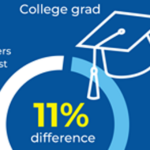Self-care is not enough to help teachers manage their stress. Organizational change is needed.
The COVID-19 pandemic has forced education stakeholders to grapple with fundamental questions about the role of schools in our society. As a result, many educators have found creative new ways to provide not just academic instruction but also emotional care, ensuring that their students are safe and well in a tumultuous time. But these efforts have not come without a cost. For many teachers, adjusting to virtual and hybrid education was highly stressful, and that stress was only compounded by the worldwide pandemic-related confusion across all areas of society. And so an already stressful job was made even more difficult. For many teachers, the return to in-person schooling hasn’t improved matters, as they’ve had to support students who are having difficulty adjusting to being back in the classroom , even as they face intense political scrutiny regarding the nature and content of their curriculum.
In this season of reimagining the purpose and meaning of schools, many educational stakeholders are crafting new visions of how schools can support all children (Nasir, Bang, & Yoshikawa, 2021). We encourage them to go a step further to ask, What is our vision for teachers’ emotional well-being? We challenge educational stakeholders to imagine what it would look like for teachers not just to survive, but to thrive in their jobs — and to consider what needs to change at the organizational level to make this possible.
Teachers’ emotions matter
For some, engaging in a conversation about teachers’ emotional well-being may feel superfluous to the critical conversations that are happening about the future of our schools. But the way teachers feel at and about their work has deep implications for both their own success and that of their students. We know that how students feel in school affects both their willingness to engage in the academic process (Côté-Lussier & Fitzpatrick, 2016; Li & Lerner, 2013) and their academic outcomes (Pekrun et al., 2017). And because teachers shape the culture and climate of their classrooms, their own emotions influence those of their students (Keller & Becker, 2020).
Research in cognitive psychology has found that we experience positive emotions when we appraise the conditions around us (or stimuli) as supportive of our goals, and we experience negative emotions when we appraise stimuli as threatening (Scherer et al., 2001). For teachers, helping students develop and grow is a central goal of their work. In his classic sociological study of teachers, Dan Lortie (1975) found that teachers were more motivated by the positive emotions arising from participating in students’ development than they were by benefits like summer vacation or financial compensation. Decades later, this assessment of teachers’ motivation remains true: Because teachers’ emotions are so deeply intertwined with their professional goals, experiencing positive emotions at work is key to reinforcing their identity as a teacher and their commitment to remaining in that role (Schutz & Zembylas, 2007). Further, it is a key indicator of teachers’ overall psychological well-being and sense of satisfaction at work (Deiner et al., 1984; Ryff, 1989; Seligman, 2011).
The way teachers feel at and about their work has deep implications for both their own success and that of their students.
Unfortunately, when teachers don’t experience alignment between the teacher they want to be and the roles and responsibilities placed on them, they are at high risk of the emotional exhaustion (or burnout) that too often leads to attrition (Santoro, 2019). Given the shortages of teachers in high-needs roles and schools before the pandemic (Cross, 2017) and the increased urgency of students’ academic and social-emotional progress since the pandemic, we cannot risk increased attrition by ignoring teachers’ emotional well-being.
What we’ve gotten wrong
As interest in students’ social and emotional learning has increased, there has been some acknowledgement of teachers’ emotional experiences. But discussions about teachers’ emotions often begin and end with encouraging them to practice “self-care,” which places too much emphasis on the individual teacher and too little emphasis on the organizational and social system in which teachers work. Although many of us have been socialized into thinking of emotions as personal and private, they are in fact deeply communal: We experience our emotions through the lens of our cultural and professional identities (Ahmed, 2014), and emotions transfer among individuals as they interact with one another (Hatfield, Cacioppo, & Rapson, 1993). Thus, teacher emotions can support camaraderie (Mawhinney, 2008) or spread burnout (Meredith et al., 2020).
Like most professional organizations, schools have implicit rules that guide how employees express (or hide) specific emotions (Stark & Bettini, 2021). And, as a result, teachers often feel pressure to express emotions that don’t necessarily align with how they feel internally. In many schools, this can manifest in a culture of toxic positivity or professional perfectionism, where to ask for help, to be emotionally vulnerable, is to be professionally vulnerable. In addition, teachers holding marginalized identities often face unique emotional demands (Bristol & Goings, 2018), arising from pressure to conform to norms for emotional expression that run counter to the norms in their home cultures. Because teachers’ emotions are shaped by their positions within the school (Zembylas, 2007), they tend to reinforce the prevailing school culture, even when transforming the culture could lead to positive emotional outcomes. When teachers feel they need to constantly fake or suppress their emotions to meet the school’s cultural norms, they may experience increased burnout (Cheung, Tang, & Tang, 2011).
Despite the ways in which teachers’ emotions are driven by the organizations in which they work, the emotional well-being of teachers is still too often viewed as being driven by their own emotional intelligence or ability to “stay positive.” But research has shown that the influence goes the other way: How teachers feel at and about school influences their dispositional happiness, self-esteem, and health (Benevene, Ittan, & Cortini, 2018). Investing in self-care, attending trainings, and learning better emotional regulation strategies are helpful, but they aren’t enough if teachers’ emotional well-being isn’t addressed at an organizational level.
A teacher happiness revolution
So what might it look like for schools, at an organizational level, to invest in teachers’ emotional well-being? One group that is attempting to enact such a vision is the Happy Teacher Revolution (HTR). Started in 2018, HTR seeks to support the mental health and wellness of teachers by training teachers to initiate support groups in their own school communities. In the past three years, HTR has launched in 328 schools, districts, and communities across the United States, Canada, Africa, and Latin America. Teachers in support groups led by HTR-trained facilitators meet regularly to connect, offer advice, and encourage each other to set boundaries to prioritize their well-being.
Teacher support groups allow teachers to recognize what is their professional responsibility and what needs to change at a systems level and is, therefore, beyond their roles.
We invited “revolutionaries” from the organization to participate in interviews about their experiences with HTR and their views of teacher emotional well-being more broadly. Nine educators, including teachers, administrators, and clinicians, agreed to chat with us over Zoom. Although our conversations were wide-ranging, three recurring themes emerged regarding educators’ visions for how schools and districts could better support teacher well-being.
Envisioning a role for professional vulnerability
Across interviews, educators noted how efforts for continual improvement and accountability too often manifest in toxic organizational cultures where educators feel that everything they do is being tracked and evaluated and where asking for help or seeking input on a decision can make them feel professionally vulnerable. One instructional coach described her teacher colleagues as feeling “under siege,” which made it difficult for them to hear and apply professional feedback. She explained that the HTR support group model provided a space for teachers to ask questions and get feedback in a way that didn’t feel threatening.
Another educator, with 29 years of experience, recalled experiencing anxiety attacks in her first few years of teaching due to her fear that she would lose her job:
I think sometimes as human beings, especially teachers . . . we are just afraid to let our real emotions out about it for fear that we’ll be reprimanded about it or for fear that someone will think that we’re not good at our job or all those kinds of things.
As the coordinator for the social-emotional learning (SEL) program in her district, she implemented HTR support groups so that new teachers could ask questions and grow without experiencing such mental health concerns. Feeling confident in one’s skills is an important aspect of teacher well-being, and this confidence cannot be developed if teachers are afraid to be vulnerable about areas where they need help.
In high-accountability school cultures, many teachers face what one school psychologist we interviewed described as the “tyranny of the urgent” (i.e., the pressure to prioritize demands with quickly approaching deadlines). Too often, educators spend disproportionate amounts of time on tasks that are not core to their identities as teachers, and losing focus on this core identity challenges their sense of well-being. A district professional development coordinator we talked to explained how support groups allow teachers to reflect on the reasons they became teachers:
When I am most happy is when I am feeling fulfilled with what I know my purpose is. People don’t take the time to reflect on their purpose, so if you don’t have language to describe your purpose, then it’s really hard to be a happy teacher. . . . Particularly in the environment that we’re in, if you can’t connect back to your purpose, then all of those external influences become so overwhelming.
She hoped providing spaces for teachers to reflect on their purpose would give teachers the opportunity to recalibrate and triage the many demands placed on them. By finding ways to set priorities based on a sense of purpose, teachers may be able to improve their sense of professional efficacy and, in turn, happiness. An English as a second language teacher, who led HTR groups in her school, explained:
You’re a happy person when you really do not define your self-worth by the success of the day, that my self-worth is not defined by . . . the score that I have on an evaluation, it’s not defined by whether every parent in my classroom likes me or not, or every colleague that I work with likes me. It’s: Do I respect myself? Do I respect the job that I’m doing?
Envisioning reduced pressure on teachers
Educators face an overwhelming sense of pressure to ameliorate the inequities that they see in their classrooms, even though those inequities are caused by much larger political and economic dynamics. That is, we often expect classroom teachers to do the impossible, closing gaps and addressing traumas that stem from sources far outside of their control. A clinical social worker we talked to explained that:
Teachers take ownership for [what’s] not theirs to take ownership of . . . and feel guilty about it . . . districts don’t do anything often to stop it, [so teachers feel] responsible for a lot of things that are just not theirs to carry around.
As a result, she noted, many educators become “a martyr to [the] profession” who consider it normal to “basically work yourself to death.” An elementary school counselor concurred that “our staff will sacrifice their own wellness to meet the needs of their students” and said that conversations about teacher well-being were needed because a happy teacher should keep “some gas in the tank.”
Teacher support groups allow teachers to recognize what is their professional responsibility and what needs to change at a systems level and is, therefore, beyond their roles. Further, we need to acknowledge that improving teachers’ well-being starts outside the school building, through reform of the systemically racist, ableist, and classist policies at the root of so much of the trauma our students face (Hehir, 2002; Kohli, Pizarro, & Nevárez, 2017; Nelson & Williams, 2019).
Envisioning teachers as people
Educators we spoke to wanted a space that validated teachers’ own trauma and stress. Although teachers, like everyone else, go through emotional rollercoasters (especially during the pandemic), they are expected to display only positive emotions at work. For example, a K-8 inclusion specialist we talked to described the pressure to stay upbeat for the kids, even amid a difficult situation: “You have to have a smile on your face all the time, or else you’re viewed as being negative.”
Teachers, like everyone, experience stress and anxiety, but many keep it to themselves. A PreK-12 music teacher said that when she held her first HTR meeting, she was surprised by how many teachers were struggling with their own mental health:
The first meeting I kind of kept it light . . . and I just asked silly get-to-know-you questions like “Something that I never get to tell people is that . . .” [And my example was] “I can put my earrings in without a mirror.” [But] almost everyone said, “Hi my name is so and so. You don’t know this about me, but I have really bad anxiety.’”
She found her colleagues’ willingness to jump right into these types of conversations refreshing because, for teachers:
the lines are blurred in education of who you are, as a person, and your professional abilities, the lines are so blurred, to the point where there’s an observation category called classroom climate . . . I feel like they sometimes expect you to have a specific personality type [that is] kind, patient, caring, saint-like.
For educators to experience well-being at work, they need to feel that their personalities and identities are accepted, that their experiences are validated, and that their full humanity is acknowledged within their school culture. This doesn’t mean that there should no rules for when and how to display certain emotions — it would be unacceptable to lash out at a student in anger, for instance — but the emotional labor required to keep certain feelings in check should be acknowledged by colleagues and supervisors.
Recommendations for school leaders
Looking ahead, it can be difficult to maintain a hopeful vision for our schools. Schools are underfunded, teachers are underpaid, and the children who are most at risk remain vulnerable. It’s not hard to see what is stressful, frustrating, disappointing, and infuriating for teachers. In fact, sometimes it’s so easy to see these challenges that we get lost within them.
We can choose to engage in a revolution to change the organizational dynamics of our schools so that teachers’ well-being is prioritized.
Amid this, however, we can choose to engage in a revolution to change the organizational dynamics of our schools so that teachers’ well-being is prioritized. School leaders set the vision for their schools, and having a shared vision is crucial to success. Leaders can start to reform their school cultures by simply acknowledging the difficult emotional work that teachers engage in every day and sending a clear message that experiencing a wide range of emotions is not a reflection of personal weakness. More concretely, leaders can provide educators with opportunities, such as HTR support groups, to give and receive social support.
Creating school cultures that support teachers’ emotional well-being is challenging but necessary. As one educator explained to us, “The real work is to be well.” To thrive, teachers require organizational policies, norms, and leadership that affirm the complex emotional demands of their jobs (Tuxford & Bradley, 2015); the wide range of emotions that they naturally experience (Frenzel et al., 2016); and the work that it takes to regulate their outward emotional expressions.
Note: Special thanks to Danna Thomas and educators at the Happy Teacher Revolution for their partnership in this research project.
References
Ahmed, S. (2014). Cultural politics of emotion. Edinburgh University.
Benevene, P., Ittan, M.M., & Cortini, M. (2018). Self-esteem and happiness as predictors of school teachers’ health: The mediating role of job satisfaction. Frontiers in Psychology, 9, 933.
Bristol, T.J. & Goings, R.B. (2019). Exploring the boundary-heightening experiences of Black male teachers: Lessons for teacher education programs. Journal of Teacher Education, 70 (1), 51-64.
Cheung, F., Tang, C.S.K., & Tang, S. (2011). Psychological capital as a moderator between emotional labor, burnout, and job satisfaction among schoolteachers in China. International Journal of Stress Management, 18 (4), 348-371.
Côté-Lussier, C. & Fitzpatrick, C. (2016). Feelings of safety at school, socioemotional functioning, and classroom engagement. Journal of Adolescent Health, 58 (5), 543-550.
Cross, F. (2017). Teacher shortage areas nationwide listing 1990–1991 through 2017–2018. U.S. Department of Education.
Diener, E. (1984). Subjective well-being. Psychological Bulletin, 95 (3), 542-575.
Frenzel, A.C., Pekrun, R., Goetz, T., Daniels, L.M., Durksen, T.L., Becker-Kurz, B., & Klassen, R.M. (2016). Measuring teachers’ enjoyment, anger, and anxiety: The Teacher Emotions Scales (TES). Contemporary Educational Psychology, 46, 148-163.
Hatfield, E., Cacioppo, J.T., & Rapson, R.L. (1993). Emotional contagion. Current Directions in Psychological Science, 2 (3), 96-100.
Hehir, T. (2002). Eliminating ableism in education. Harvard Educational Review, 72 (1), 1-33.
Keller, M.M. & Becker, E.S. (2020). Teachers’ emotions and emotional authenticity: Do they matter to students’ emotional responses in the classroom? Teachers and Teaching, 1-19.
Kohli, R., Pizarro, M., & Nevárez, A. (2017). The “new racism” of K–12 schools: Centering critical research on racism. Review of Research in Education, 41 (1), 182-202.
Li, Y. & Lerner, R.M. (2013). Interrelations of behavioral, emotional, and cognitive school engagement in high school students. Journal of Youth and Adolescence, 42 (1), 20-32.
Lortie, D.C. (1975). Schoolteacher: A sociological study. University of Chicago Press.
Mawhinney, L. (2008). Laugh so you don’t cry: Teachers combating isolation in schools through humour and social support. Ethnography and Education, 3 (2), 195-209.
Meredith, C., Schaufeli, W., Struyve, C., Vandecandelaere, M., Gielen, S., & Kyndt, E. (2020). ‘Burnout contagion’ among teachers: A social network approach. Journal of Occupational and Organizational Psychology, 93 (2), 328-352.
Nasir, N.S., Bang, M., Yoshikawa, H. (2021). Possible futures: What might we accomplish in 25 years? Phi Delta Kappan, 103 (2), 54-57.
Nelson, S.L. & Williams, R.O. (2019). From slave codes to educational racism: Urban education policy in the United States as the dispossession, containment, dehumanization, and disenfranchisement of Black peoples. Journal of Law in Society, 19, 82.
Pekrun, R., Lichtenfeld, S., Marsh, H.W., Murayama, K., & Goetz, T. (2017). Achievement emotions and academic performance: Longitudinal models of reciprocal effects. Child Development, 88 (5), 1653-1670.
Ryff, C.D. (1989). Happiness is everything, or is it? Explorations on the meaning of psychological well-being. Journal of Personality and Social Psychology, 57 (6), 1069-1081.
Santoro, D. (2019). The problem with stories about teacher ‘burnout.’ Phi Delta Kappan, 101 (4), 26-33.
Scherer, K.R., Schorr, A., & Johnstone, T. (Eds.). (2001). Appraisal processes in emotion: Theory, methods, research. Oxford University Press.
Schutz, P.A. & Zembylas, M. (2009). Introduction. In P.A. Schutz & M. Zembylas (Eds.), Advances in teacher emotion research (pp. 3-11). Springer.
Seligman, M.E.P. (2011). Flourish. Simon & Schuster.
Stark, K. & Bettini, E. (2021). Teachers’ perceptions of emotional display rules in schools: A systematic review. Teaching and Teacher Education, 104, 103388.
Tuxford, L.M. & Bradley, G.L. (2015). Emotional job demands and emotional exhaustion in teachers. Educational Psychology, 35 (8), 1006-1024.
Zembylas, M. (2007). The power and politics of emotions in teaching. In P. Schutz & R. Pekrun (Eds.), Emotion in education (pp. 293–309). Academic Press.
This article appears in the February 2022 issue of Kappan, Vol. 103, No. 5, pp. 24-30.
ABOUT THE AUTHORS

Kristabel Stark
KRISTABEL STARK is a postdoctoral research associate at the University of Maryland, College Park.

Neesha Daulat
NEESHA DAULAT is a core faculty member and associate director of field placement in the Organizational and Leadership Psychology Department at William James College, Newton, MA.

Simon King
SIMON KING is a research assistant at Boston University, Boston, MA.











